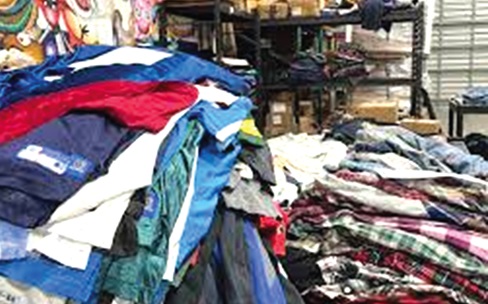On a Saturday morning, Kantamanto Market bursts into organised chaos.
Thousands of shoppers push through narrow lanes, hoping to find affordable shirts, jeans or dresses before the best pieces disappear.
Traders shout over one another as bales of clothing from London, Beijing and Toronto are sliced open, each one a gamble between profit and loss.
Yet for every garment that finds a happy buyer, others are tossed aside, torn, stained or unsellable, destined for the gutter, the landfill or the ocean.
The sheer volume of used clothing pouring into Ghana tells its own story.
According to UN Comtrade data compiled by TrendEconomy, Ghana imported worn clothing worth 93 million US dollars in 2023, with the United Kingdom (UK) and China among the leading sources.
Other trackers, such as the Observatory of Economic Complexity, place the figure higher, at around 121 million US dollars.
Regardless of methodology, the numbers confirm Ghana is one of the world’s largest importers of second-hand clothes.
But how much of this clothing truly serves a purpose? Research by The OR Foundation, an organisation working closely with Kantamanto traders, estimates that about 15 million garments enter the market every week, and roughly 40 per cent of each bale is unsellable.
That waste ends up clogging Accra’s drainage systems or washing onto our shores.
A TIME magazine investigation published this month puts the annual tonnage of imports at 225,000 tonnes, warning that nearly half quickly becomes waste. Greenpeace has gone further, estimating that as many as 500,000 garments are discarded each week in Kantamanto alone.
The consequences are plain to see.
The Korle Lagoon, once a vital water body, is now one of the most polluted in the world, with discarded textiles forming mats of sludge that block flow.
Along the coast, from Jamestown to Labadi, streams of polyester waste stretch across the sand.
For fishing communities already battered by declining catches, this additional assault on their environment adds insult to injury.
Yet we cannot dismiss the importance of this trade to livelihoods. Kantamanto is a city within a city, supporting an estimated 30,000 workers who rely on sorting, repairing, reselling and upcycling.
When a fire swept through the market in January this year, affecting nearly 8,000 traders, it was not just stalls that were destroyed, but entire families’ means of survival.
For many Ghanaians, the affordability of second-hand clothing is what makes decent dressing possible in the face of rising inflation and a weakening cedi.
So we face a paradox.
The trade is both a lifeline and a looming disaster.
The real problem is not second-hand clothing itself, but the sheer volume and poor quality of what is dumped on our shores. In the past, the best of Europe’s fashion found a second life in Accra.
Today, with the explosion of cheap fast fashion, much of what is exported is low-grade and close to landfill before it even leaves foreign ports.
What then must be done?
First, Ghana must insist on quality control at the point of import.
Customs authorities should be empowered to reject bales that are clearly substandard.
Second, exporting countries and fashion brands must take responsibility through Extended Producer Responsibility schemes.
If Britain, the European Union (EU) or the United States (US) are happy to ship clothes here, they should also be willing to contribute to managing the waste that results.
A levy at source, transparently channelled into waste management and recycling infrastructure in Accra, would be a fair starting point.
There must also be investment in upcycling and local textile innovation.
Many Kantamanto workers already repair and repurpose garments into new creations.
With proper training, credit and safer working conditions, this could grow into a circular economy that sustains jobs and reduces waste.
Finally, government and city authorities must treat the mounting clothing waste as a public health emergency, investing in coastal protection, drainage clean up and community education.
Ghanaians have every right to affordable clothing.
But we must not allow our markets and beaches to become the global fashion industry’s dumping ground.
The figures are clear: millions of garments each week, tens of thousands of livelihoods, but hundreds of thousands of tonnes of waste a year.
The choice is also clear.
Either we reform this trade to serve our people and protect our environment, or we drown under the weight of the world’s unwanted clothes.

